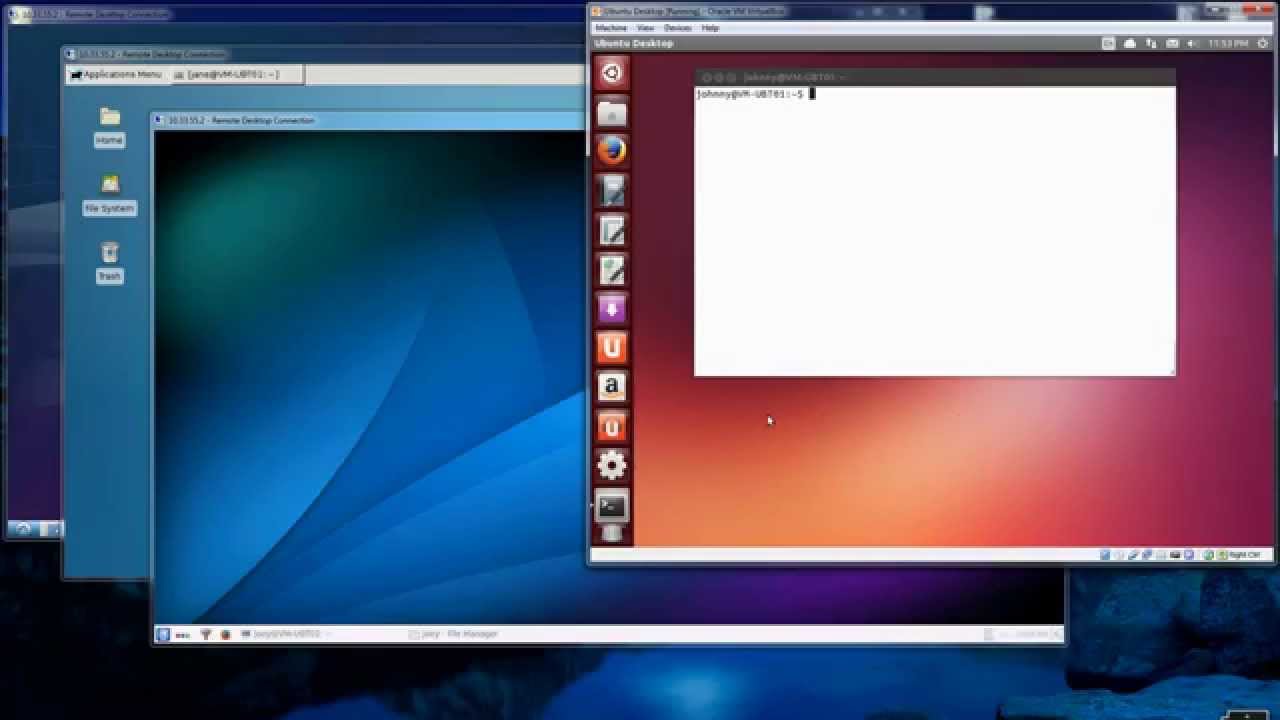
- Tigervnc debian install#
- Tigervnc debian update#
- Tigervnc debian code#
- Tigervnc debian password#
- Tigervnc debian windows#
Network-manager-applet xfce4-notifyd-gtk3 \ Pacman -S xfce4-gtk3 xfce4-goodies xfce4-terminal \
Tigervnc debian install#
XFCE or KDE): # OpenSUSE (XFCE)ĭnf -y group install "KDE Plasma Workspaces"ĭnf -enablerepo=epel group -y install "Xfce" "base-x"ĭnf -enablerepo=epel group -y install "KDE Plasma Workspaces"ĭnf -y group install "KDE Plasma Workspaces" "base-x" TighVNC Server: as of 2020 current Linux’s version is v1.3.10 from 2009.TurboVNC Server: only using Java, actively maintained.
Tigervnc debian code#
TigerVNC Server: using native or Java code and actively maintained.On Linux (on a classic machine or a screen less server) there are multiple (opensource) possibility for a VNC server such as TightVNC, TigerVNC and TurboVNC (this is a non exhaustive list, this guide will be using the native version of TigerVNC): Since the VNC Server (TigerVNC) configuration is the same on most Linux distributions and only the installation method differ, this wiki is targeting: OpenSUSE, Fedora, CentOS, RHEL, Debian, Mageia, Void Linux, Arch Linux, Manjaro and FreeBSD (in order to be useful for more people) Installing a VNC Server So, I am using 10.75.77.82:5901.How to configure and secure a VNC server on Linux with TigerVNC? (on a screen less server or a classic machine)

Open Realvnc and enter :5901 in vnc server address. RealVNC is available for almost all operating system platform like Windows, macOS, Linux (Debian and RPM based), Solaris, etc.
Tigervnc debian windows#
I am using windows and I am going to use Realvnc as a client. Let's test our setup by connecting to vnc server, For that we need local vnc client, it depends upon the local operating system.
Tigervnc debian password#
If you enter the password longer than the password policy which is 6-8 character long, it will automatically trim off the password, please keep this in mind.īy default, VNC is configured to listen on TCP port 5901 for first display and 5902 for second display and so on. It will also ask to set view-only password which will allow the user to see the screen but not interact with it. Log file is /home/vnc/.vnc/578e1bb09561:1.logĪs we have are starting server first time after installation it will ask us to set a password that client use to connect. Starting applications specified in /home/vnc/.vnc/xstartup Xauth: file /home/vnc/.Xauthority does not existĬreating default startup script /home/vnc/.vnc/xstartup Would you like to enter a view-only password (y/n)? y You will require a password to access your desktops. You can start the server by this command. Switch to a vnc user for further operations. Now, Add vnc user to sudo group, it will give permission to vnc user to act like a root user and execute root command. We will need to add vnc user to sudo group. Enter password and you can skip the other details by pressing ENTER key. It will ask for the new password and user details. You can keep username as per your choice. You can also you existing user.Ĭreate a user named vnc by using this command. To keep things secure and robust, we will create separate user vnc connection. Installation may take a while depeding on the dependencies installed on the machine. $ apt-get install xfce4 xfce4-goodies gnome-icon-theme tightvncserver The second command will do the actual installation of tightvncserver and XFCE4 with useful addons.
Tigervnc debian update#
Update the packages list available in the repositories by executing first command 'apt-get update'. However, you can also use other popular desktop environments like KDE, GNOME, and Unity. It uses a surprisingly low amount of memory (especially when you look it from a Windows perspective), while at the same time looking decent and working just as well as any other Linux flavor.

Out of most popular available desktop environments, XFCE is the quite lightweight. VNC is useful on home computer networks, allowing someone to access their desktops from another part of the house or while traveling. Keystrokes and mouse clicks are transmitted from one computer to another, allowing technical support staff to manage a desktop, server, or another networked device without being in the same physical location. It uses the Remote Frame Buffer protocol (RFB) to remotely control another computer. VNC enables the visual desktop display of one computer to be remotely viewed and controlled over a network connection.

VNC (Virtual Network Computing) is a technology for remote desktop sharing.


 0 kommentar(er)
0 kommentar(er)
